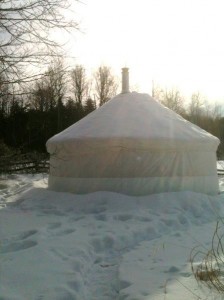Month: January 2014
-
Safari Hunter: The Shiny Pokémon finder
Ok, here’s what you need to know: Pokémon X/Y is a mildly popular game on the Nintedo 3DS. While playing, you come across wild pokémon that you can catch so they join your team. Very rarely, the wild pokémon you find will be “shiny”, making it highly coveted. Now, it’s known in X/Y that the…
-

Yurting: sewing the canvas with the Sailrite and yurt dwelling tips
Well it’s been almost a year since the last blog post and much has been discovered about living in a yurt in a Canadian climate. Since the completion of the Yurt tono crown, two pieces of ash steam bent into a circle (see last yurt blog in March 2013), the canvas was sewn out of…
